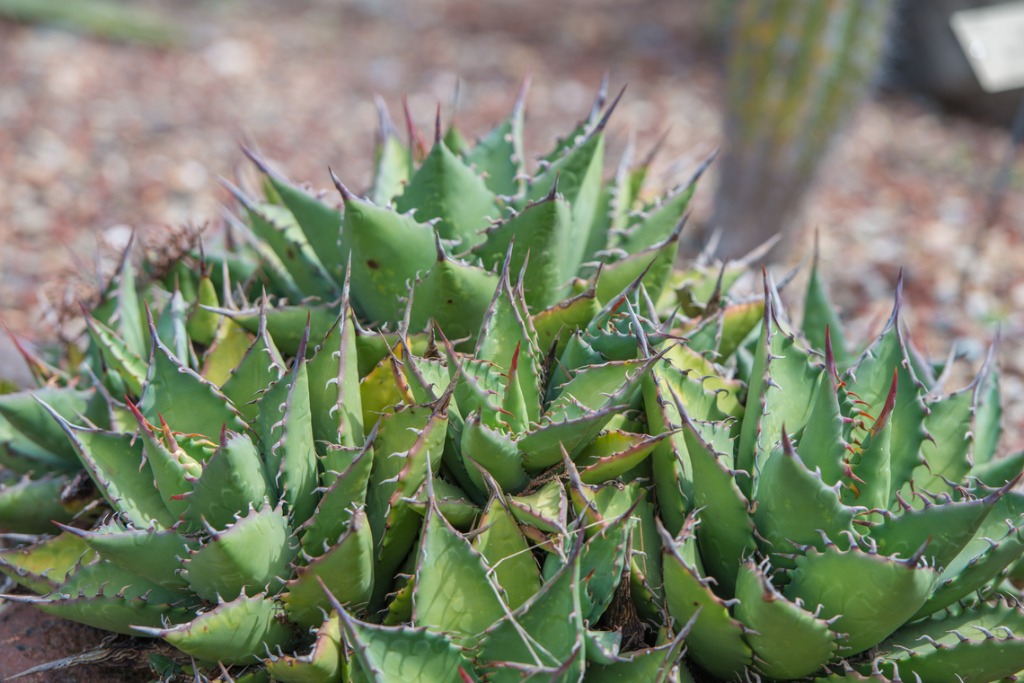Magdalena Island Agave
(Agave margaritae)

Description
Agave margaritae is a species of plant from the Agave genus. Its common name in English is "Magdalena Island Agave". The plant is endemic to Baja California Sur state in northwestern Mexico. It is only found on Magdelena Island (type locality) and Isla Santa Margarita in the Gulf of California. It is associated with Echinocereus barthelowanus. Agave margaritae consists small rosettes, that are formed in sparse offshoots. Its pointed leaves have oval to wide lancets and are thick, fleshy, variably arranged, bright-yellow/green colored, 10 to 25 cm long and 7 to 10 cm wide. The leaf edges are variably serrated and form a brown horny edge. The colors of the tips range from brown to grey and are two to three cm long. The panicles inflorescence are two to three and a half meters high. The bright-yellow flowers are 45 to 50 mm long and appear on the upper half of the inflorescence in loose, variably arranged branches. The flower tube is 14 to 10 mm long. The blooming period is from June to July. The elongated three-chamber capsules are three to five cm long and 1.5 to two cm wide. The black, variably formed seeds are four to five mm long and 0.5 mm thick. The Species description was published in 1889 by Townshend Stith Brandegee. A synonym of this species is Agave connochaetoden Trel. Agave margaritae is a representative of the genus Agave. It is under domiciled in Baja California Peninsula and differentiated through leaf and flower structure characteristics. The species is related to Agave vizcainoensis. Agave margaritae is cultivated in Huntington Botanic Garden in San Marino, California. Agave is a genus of monocots native to the hot and arid regions of the Americas, although some Agave species are also native to tropical areas of South America. The genus Agave (from the Ancient Greek αγαυή, agauê) is primarily known for its succulent and xerophytic species that typically form large rosettes of strong, fleshy leaves. Agave now includes species formerly placed in a number of other genera, such as Manfreda, ×Mangave, Polianthes and Prochnyanthes. Many plants in this genus may be considered perennial, because they require several to many years to mature and flower. However, most Agave species are more accurately described as monocarpic rosettes or multiannuals, since each individual rosette flowers only once and then dies; a small number of Agave species are polycarpic.
Taxonomic tree:







